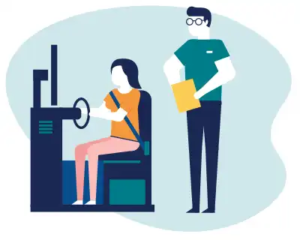1. Medical Referral
The Austroad guidelines state that participants with a disability or certain medical conditions must have a doctor’s referral to do a Driving Assessment with an OT. Ultimately the referring doctor is responsible for providing medical clearance to Queensland Transport and therefore must support the referral to an OT.
2. NDIS Referrals
NDIS participants require an Alliance Rehabilitation NDIS Referral to confirm their current plan funding and relevant goals for the driving assessment, in addition to the NDIS Driving Referral Form which is to be completed by a supporting medical practitioner.
3. Driver’s License & Medical Certificate
To complete an OT driving assessment the participant needs a current driver’s license, this can be either a learner’s permit or open license.
The referring doctor will also need to complete a Qld Transport Medical Certificate for Motor Vehicle Driver (Form 3712) and stating “For the purposes of Occupational Therapy Driving Assessment / Training only”.
4. Vision
Computerised perimetry assessment and visual acuity testing by an Optometrist/Ophthalmologist is required for all OT Driving Assessments.
This is a vision test from an Optometrist/Ophthalmologist with recommendations regarding vision for driving.
NOTE: Participants will not progress past this stage without providing all necessary documentation. If this documentation cannot be provided within 3 months of the intake, Alliance Rehabilitation will withdraw the referral.
5. Cognitive Assessment
All participants are required to complete a cognitive assessment with an OT prior to progressing to the driving assessment. Occasionally the OT will also recommend an assessment with a neuropsychologist to determine suitability for driving.
6. Driving Assessment at Alliance Rehabilitation
Once the medical referral, visual assessment and cognitive assessment (and neuropsychological assessment if relevant) is completed the OT can complete the Off and On-road Driving assessment. The OT will then write a report of recommendations, detailing the medical conditions impacting the participants driving abilities and list vehicle modifications that may be required to return to safe operation.
If Driver Training is required, this will be detailed in the recommendations. The OT will specify if they would like to re-assess the person, towards the end of the driving program. All reports are sent to the treating doctor. The doctor must sign a Qld Transport Medical Certificate for Motor Vehicle Driver (Form 3712) for the person to commence or continue driving.
7. GP/Specialist Medical Driving Approval
Participants are required to supply a Medical Approval using the Qld Transport Medical Certificate for Motor Vehicle Driver (Form 3712) – specifying they are permitted to drive and detailing any conditions or vehicle modifications.
8. Driving Lessons / Driver Training
The participant may be recommended to complete lessons to practice the skills the person requires to become a driver or to learn how to operate the modifications. Our recommended provider for this is Graduate School of Motoring in Townsville.
9. Qld Transport Testing
If the participant has their Learners License, they will need to be tested by the Licensing Authority (Queensland Transport and Main Roads) to obtain their Provisional License.
10. Assessment Complete
Once you are cleared to drive, keep any relevant documentation with you as evidence.





